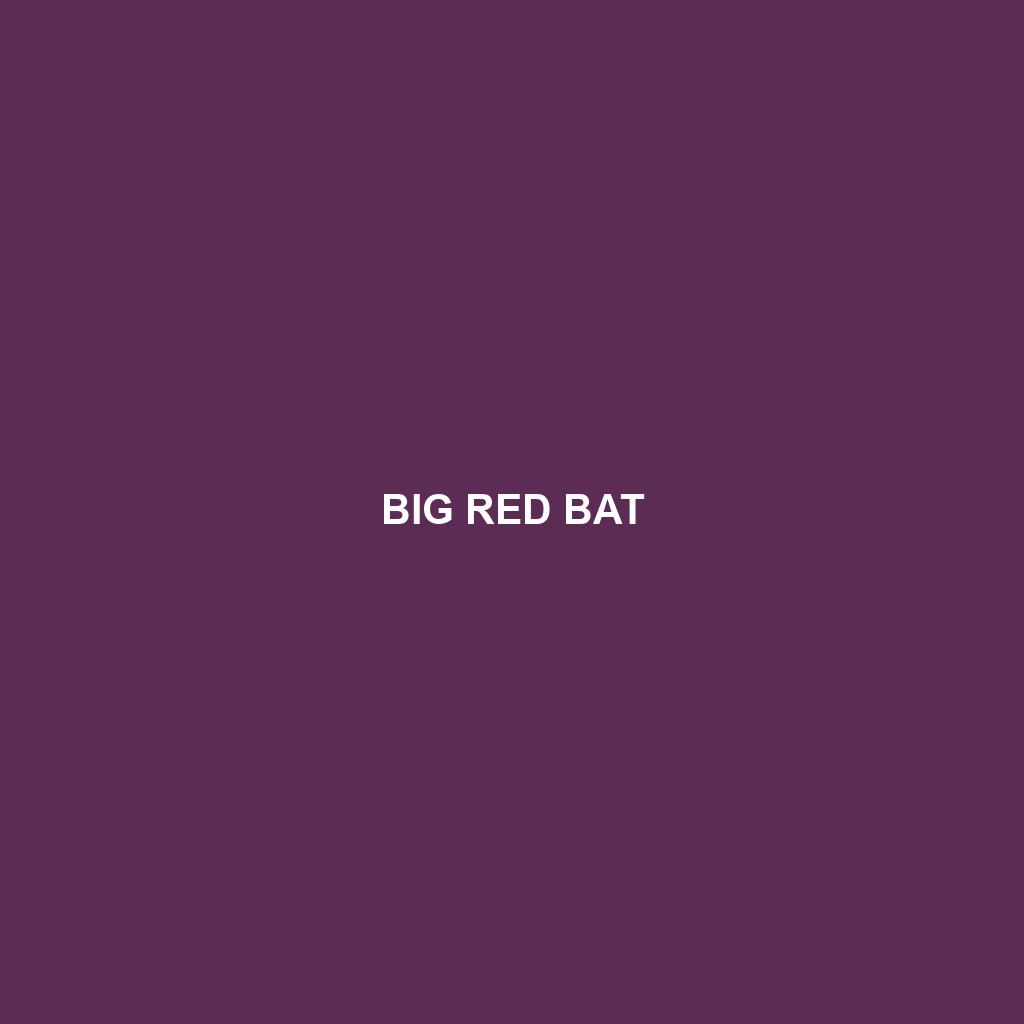Species Description: Big Red Bat
Common Name: Big Red Bat
Scientific Name: Lasiurus borealis
Habitat: The Big Red Bat primarily inhabits forested areas and woodlands across North America. This species is commonly found in regions with open canopies that provide ample space for flying, such as deciduous forests and areas adjacent to wetlands. Geographic locations include the eastern United States, parts of Canada, and are even spotted in some southern regions during summer months due to migration behaviors.
Physical Characteristics: The Big Red Bat is characterized by its notable size, with wingspans ranging from 12.5 to 13.5 inches. This bat displays striking reddish-orange fur, which can vary in tint depending on individual specimens. Distinctive features include long ears and black facial markings, which enhance its remarkable appearance. Adult Big Red Bats typically weigh between 10 to 15 grams, placing them in the medium size range among North American bats.
Behavior: Big Red Bats are nocturnal creatures that exhibit unique behaviors during foraging. They are known for their characteristic fluttery flight pattern, which is particularly visible as they hunt insects mid-air. These bats are solitary and often roost singly or in small groups, hanging from the leaves of trees during the day. Additionally, they are known to migrate seasonally to warmer climates during the winter months.
Diet: The diet of the Big Red Bat mainly consists of nocturnal insects, making it an important predator in its habitat. Common food sources include moths, beetles, and various flying insects. Their feeding habits are critical for maintaining ecological balance by controlling insect populations, which also highlights their role as effective nocturnal hunters.
Reproduction: Big Red Bats typically breed in late summer, with females giving birth to one to four pups in late June or early July. The young are born blind and helpless, relying entirely on their mothers for warmth and nutrition. Post-natal care is intensive, as mothers will continue to nurse and protect their young until they are capable of flight and foraging on their own, usually around three to four weeks after birth.
Conservation Status: Currently, the Big Red Bat is classified as a species of “Least Concern” by the International Union for Conservation of Nature (IUCN). However, they face threats from habitat loss, pesticide use, and climate change, which raises concerns about their long-term survival. As such, ongoing monitoring and conservation efforts are essential to ensure their continued presence in ecosystems.
Interesting Facts: One fascinating aspect about the Big Red Bat is its ability to rotate its ears independently, which allows it to pinpoint the location of sounds and prey effectively. Moreover, this species is known for its ability to thrive in both urban and rural environments, adapting to various living conditions.
Role in Ecosystem: The Big Red Bat plays a crucial role in its ecosystem as a predator of insects, contributing to pest control and a healthy balance within the environment. Furthermore, their activity helps pollinate plants as they navigate through their habitats, making them integral to the health of both forest and urban ecosystems.
